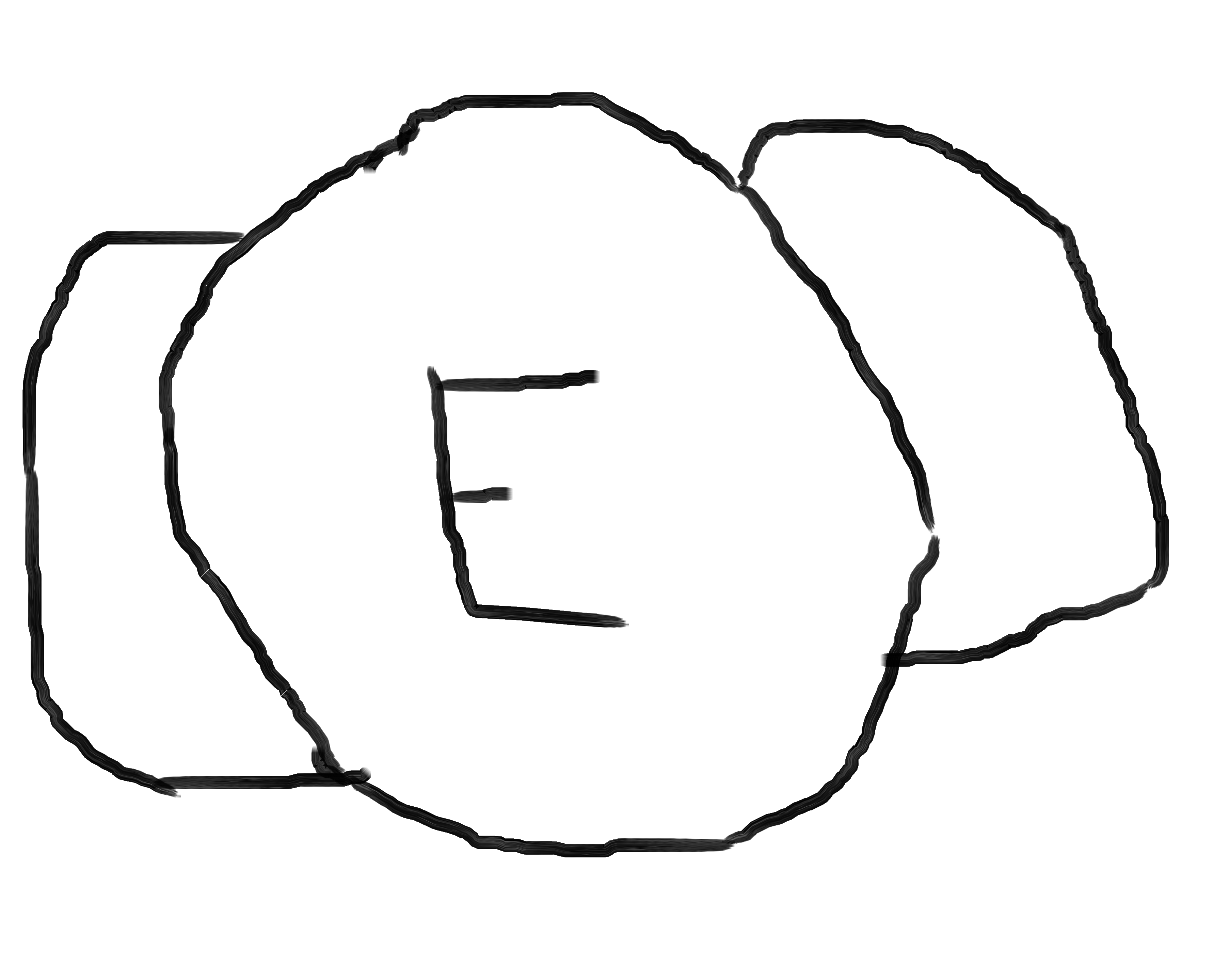Please explain my confused me like I’m 5 (0r 4 or 6).

Yes. They skipped right over. It confused many people at the time: a whole year of their lives, gone. Many centuries later when zero was invented, an explanation was finally offered as to why that happened.
😂

Serious answer about what the year would have been in 1 AD, according to 63-year-old Emporer Augustus:
DCCLIV754 Ab Urbe ConditaThat means “from the founding of the city” - they based their calendar on the mythical founding of Rome, as calculated by Verro, who himself was not long dead at that point. Before that, they just counted the years of each person’s reign Japanese-style. Probably other people in the ancient world had older calendars.

For those who don’t know, the concept of zero wasn’t discovered until the sixth century in India, and then either transferred or rediscovered in about the eighth century in Arabia.

When you consider the time as a number line, years are not points at integers (which would in some way warrant a year 0), but rather periods between them. Year 1 is the period between 0 and 1, and before that was -1 to 0, or year -1. There is no year 0, because there isn’t anything between 0 and 0

That makes sense, but trying to square that off with the idea that the year 2000 is the start of the 21st century is hurting my head.
If year 1 is the 1st year, then surely the first year of the 21st century should be 2001?

It should all be zero indexed. Positional number systems like we write with are (600=0600) but our language isn’t, which causes this problem. Basically, if 2004 is the 20th century the gospels took place in the 0th.

If year 1 is the 1st year, then surely the first year of the 21st century should be 2001?
It is. The system is confusing.

the idea that the year 2000 is the start of the 21st century is hurting my head.
That may be because it is not. The first century was years 1 to 100. The second was 101 to 200. The 21st is therefore 2001 to 2100.
What you’re probably referring to is the “cultural century” which was considered to have started when the lead digit changed from 1 to 2. The same thing happened quite recently when some people argued 2020 was the start of a new decade (again, it wasn’t)

I hate it when people say it wasnt the start of a new decade, it’s a shit argument, why does it matter what the first year was, 2014 - 2024 is also a decade, and 2pm aest September 22nd 2024 will also be the start of a new decade. There is nothing wrong with saying 2020 was the start of a new decade. (again, it was)

There are decades and there are decades. Just like there are weeks (period between Monday and Sunday inclusive) and weeks (any seven consecutive days).
When you say “I’ll do this next week”, then you mean the next period between Monday and Sunday. When you say you’ll do it in a week, it means you’ll do it after exactly 7 days from now, regardless of what day is it today. Same for decades.

You said start of a new decade, not the new decade in the original comment, they are very different

??? You know very well what I meant, be more forgiving to second-language speakers

-
when I originally replied to you, I very obviously did not know that you meant that
-
didn’t know you weren’t a native speaker either
-

This explanation is unclear to me. Why do we choose the later of the two endpoints of the year for (0, 1) but the earlier of the two for (-1, 0)?
The language is rooted in the same logic as people. Your first year was between the ages of 0 and 1. The first year before you were born is between -1 and 0. There is no 0th year because 0 is a point in time and not a range in time.

Your explanation works equally well for any integer though. You could say the same of 1.
I think you’re saying that it’s a fencepost issue. But even for personal ages this doesn’t check out: for a year after you are born, your age is “0.” A one-year-old baby is in the following year.
I feel you’ve missed the point I was making and assumed I’ve made another. Age number and year number are different. You’re in your first year when your age is not yet 1. You’re in your second year when your age is between 1 and 2.
Years follow numbers as in "this year was the first/second/third year of ", not “this year was the year turned X years old”

Oh I see. Sure, historically it makes sense that years have been ordinal numbers. But in the modern era with all our math and computational knowledge, it is not convenient anymore. It means off-by-one errors are easy to commit when comparing BC and AD years.
This is why programming languages all index from 0 rather than 1 (knuth and lua be damned)

Because until the Middle Ages, Europeans were afraid of the number 0.

For the same reason why 1.5 is on the right from 1 but -1.5 is on the left from -1

Absolute value. Both systems count time from the same epoch, or zero point.
One year before the epoch is 1 January 1BCE One year after the epoch is 31 December, 1CE.
Half a year before the epoch (-0.5 years) is June 30, 1BCE. Half a year after the epoch (0.5 years) is July 1st, 1CE. These dates occur within the first year before the epoch, and the first year after the epoch, respectively.

If we were starting from scratch, it would probably be better to go with two year zeroes, so it would fit normally into positional number systems, and then you could even talk about 0.5AD for the relevant summer.
Unfortunately, positional numbering wouldn’t be invented in the old world until hundreds of years after the Christian calendar.

The only positional numbering system I use daily (base 10) has only one zero. What system are you talking about?

Oh really? What do -0.25 and 0.25 both start with, and round to?
A reminder to read the original reply that started this thread. There’s two “zero-areas” between the one points and the zero point.

Ah, I see. You’re advocating for naming the intervals (0, 1) and (-1,0) by rounding toward zero rather than away from zero. I would advocate for rounding toward the lesser value: (-1, 0) -> “-1” and (0,1) -> “0”

That could work. Calculating across eras would still end up sort of funny (the putative nativity would be a year closer to 233BC than 233AD, for example), but unless you’re an archeologist that doesn’t come up that often.
I had another conversation about this not that long ago, and it really does boil down to treating intervals as numbers. Unix epoch doesn’t officially extend to pre-1970 years, but it’s defined as “the number of seconds that have elapsed [past perfect] since” for that reason, and does have a second 0. It fair to guess Bede himself didn’t properly distinguish between the two, because that leads directly to an argument 0 is a number, which AFAIK doesn’t appear in European mathematics until much later.

I think the only reason that the nativity would be a year closer to 233 ad than 233 bc is because Jesus was born in late December. Had he been born a week later on the 1st of January, it would work out, with 1 ad starting a year after his birth and 1 bc starting a year before (year 0 being that of his birth)

The year was built around it, not the other way. It’s all derived from the Christian calendar. I’m not sure off the top of my head how Christmas ended up a few days before New Years, but they’re deliberately very close. It has been argued that the real life birth might not have been in winter at all (or even Bethlehem).
I digress, though. It would inevitably be lopsided somehow, because you’ve centered the numbering system around six months off of the New Years points.

So in your idea there would be year +0 and year -0 before it, right?

floating point arithmetic on computers does suffer the existence of a negative zero. But it’s generally considered an unfortunate consequence of IEEE754.

Well, AD and BC(E) are the usual notation in this case, but yes. This is distinct from -0 and +0 in computation, because as OP says these are intervals rather than points.

https://en.wikipedia.org/wiki/Year_zero
The year of Jesus’ supposed birth was counted as year 1 AD/CE. The year before that is considered year 1 BC/BCE. It’s worth noting that the concept of zero didn’t yet exist back then. https://en.wikipedia.org/wiki/0#History

i hope all these conflicting answers in the comments have made you less confused, OP.
😁
ELI5 answer?
In the conventional calendar, there wasn’t a year zero and it wasn’t skipped. Zero is the moment in time that we use to begin counting time.
Think of an elementary school style number line:
…-3_-2_-1_0_1_2_3…Each number is one year apart. This makes the numbers measure something like Age. If you are 3 years old, you can count 3 years between 0 and 3.But a year is not an Age. It is the span of time between ages, and the years we name are actually the spaces between the numbers on the number line. So the first year (1 AD/CE) is the first space after zero (between 0 and 1), and the first negative year (1 BC/BCE) is the first space before the 0 (between -1 and 0).
Then there is the astronomical calendar, which does have a year zero. They get this by naming the year (the space on the number line) after the number to the right side of the space on the number line.

By this description, year zero is the time between the 0 and the 1 for the same reason the time between 10 and 11 is the year 10.

Your logic is correct, but you are off by 1.
0-1 is year 1
10-11 is year 11

The anno domini (AD) dating system started in 525. The concept of zero did not make it to Europe until the 11th century.

Nope. 1 BC/BCE -> 1 AD/CE. That’s just how it was designed.

The concept of zero had not even been discovered at the time the calendar was designed.

Almost. The first recorded use of ‘Zero’ was in Mesopotamia in 3BC/BCE. https://www.history.com/news/who-invented-the-zero

this is absolutely wrong.

When someone decides to change the way that they keep track of time, the new calendar typically starts at 1, as in “the first year of this new era”. It’s not that there was no existing year before that, just that it doesn’t make sense to start as zero.
It’s not like the Gregorian calendar that we use now existed in -1 and then rolled over to 0 and then 1. They just started the new one at 1, and for a period of time, there was surely some overlap in people using both calendars, until one was phased out entirely.

The year 1AD wasn’t called 1AD in 1AD. The system was invented hundreds of years later.
Korea kinda takes this to the extreme with birthdays.

I’m no expert but I assume that the year Christ died would be “year zero” (assuming you’re talking about anno Domini (AD) and before Christ (BC)) since we started counting after that.
EDIT: reading more on the topic I might be completely incorrect with my above statement. If someone else knows, please do correct me
EDIT 2: I found this on Wikipedia which talks about a “year zero”

They switched when years are counted. BC years are counted at the beginning of the year. AD years are counted at the end of the year.
The halfway mark in the first inch of a ruler is 0.5". The first inch ends at 1.00. 1.25" falls in the second inch of the ruler.
We recently completed the 3rd month in the 2024th year AD. We have not completed the full, 2024th year yet; but we are in it. This most recent April 1st was 2023.25.
1-Jan-1 BC was almost a year before 31-Dec-1 BC. 31-Dec-1 AD was a year after 31-Dec-1 BC.

Arbitrary decision is arbitrary.

Zero doesn’t even exist so how would year zero.

Can i state the obvious reflect on if this question even makes sense?
We are currently the 2024 year since we began counting and probably didn’t do so from day 1. Instead we took a significant cultural event and marked it the beginning. Adapting any initial time keeping to it.
We centered the beginning of this count on the life of someone who we cant proof ever existed. Great start.
we have likely been tracking sun cycles from much before but we cant exactly call our time keeping records reliable scientific measurements. Different civilizations and cultures had different ideas, may dispute data and eventually all had to make way for the teaching of the church.
There is no year 0, the calendar is a construct of time But doesn’t keep nor measure it.

One nitpick, Jesus was almost certainly a real figure. There are many records indicating someone with that name was in the area at the time, and that they were executed by crucifixion.
The religious stuff, obviously no way to prove. But as a person, the historical consensus is they existed.

One nitpick, Jesus was almost certainly a real figure. There are many records indicating someone with that name was in the area at the time, and that they were executed by crucifixion.
No there isn’t. There’s tons of people who’ve claimed they’ve found records but ultimately none of them can be produced or are based on other accounts like Josephus who doesn’t ever directly reference Jesus. Further none of his original writing survived. Only reproductions, and the earliest one is from 11th century. Or Tacitus who was born after Jesus was dead. So no direct knowledge or evidence of Jesus as a individual, just a second hand accounting at best. Oh and also, no originals exist. Just copies dated back to the 11th century…
All “evidence” only starts 1000 years after Jesus actually lived… supposedly written by people who were born after Jesus died… and would have written that stuff 50-100 years after his death.
There is no actual archaeological evidence that “Jesus” existed. And a mere 3 references that exist outside of the bible that I’m aware of. All of which are not original manuscripts.
Edit: All of this to say, there is no consensus… and to claim there is consensus on the matter is a christian/catholic claim. Not an actual historical consensus.

